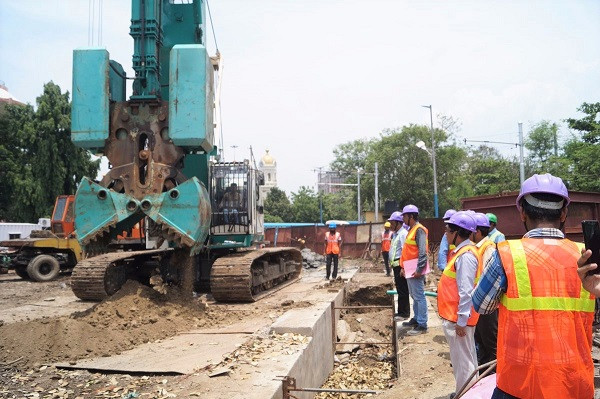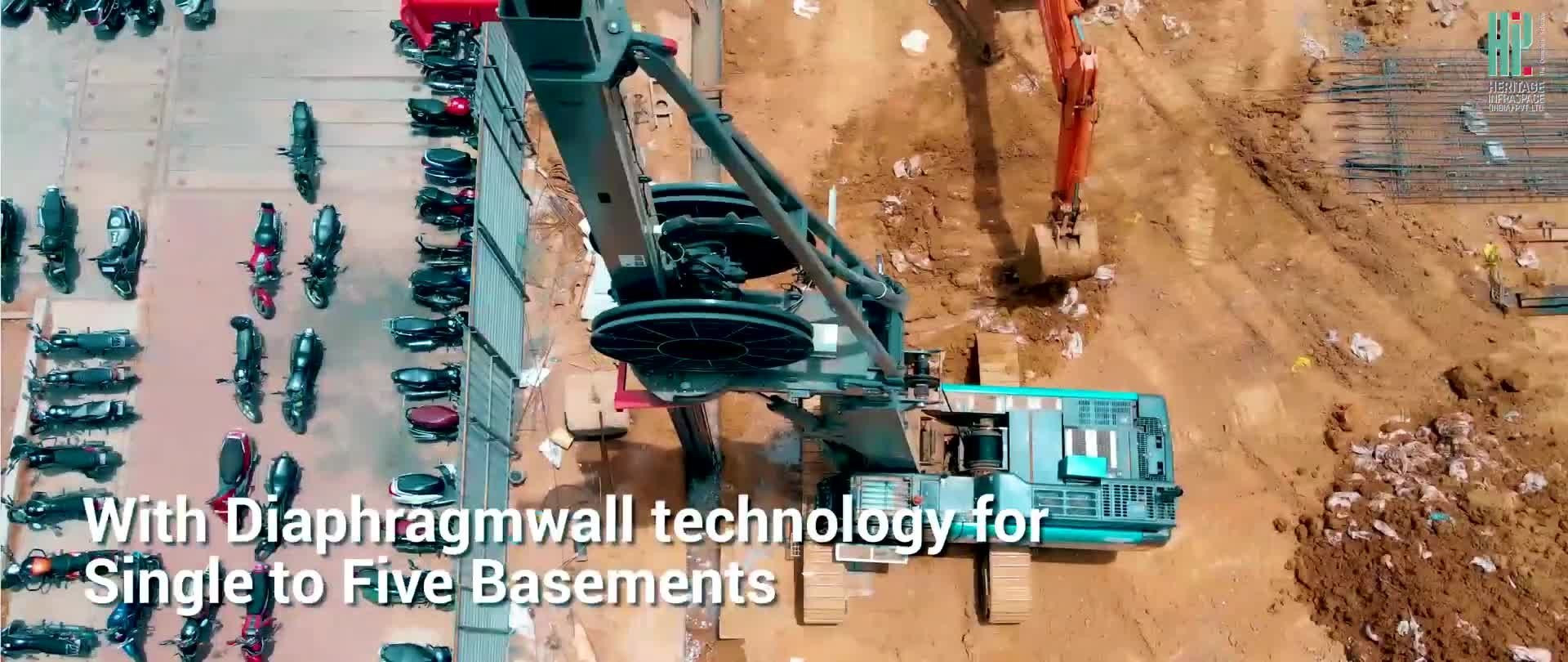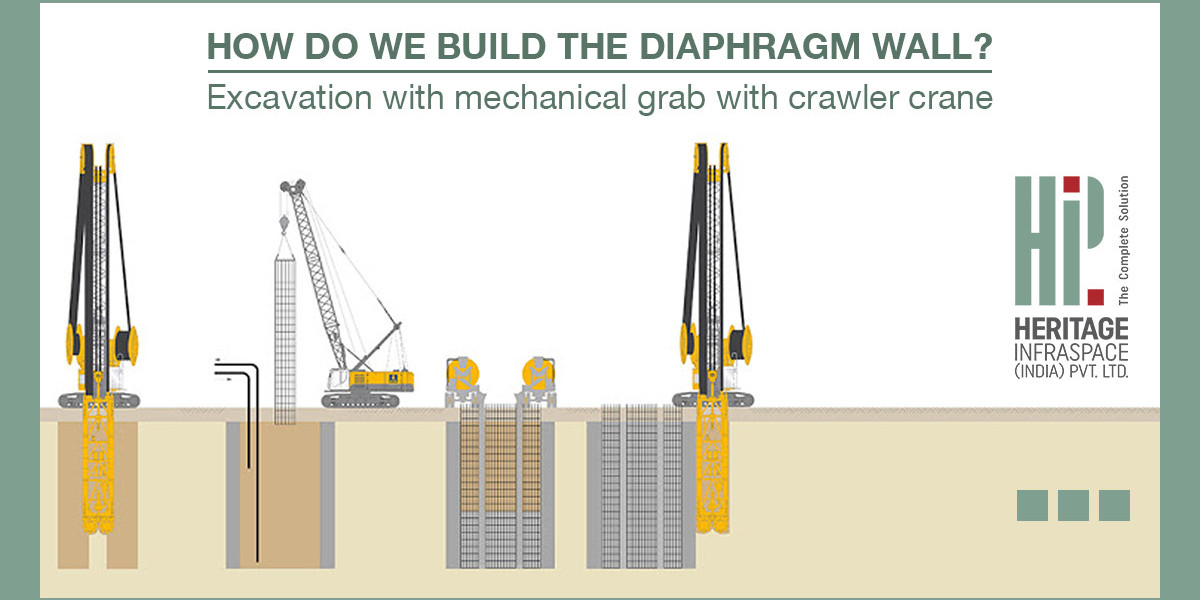In the realm of civil engineering, construction techniques have evolved significantly over the years, especially in the field of underground construction. From creating strong foundations for skyscrapers to developing robust structures for transportation systems, India has been at the forefront of adopting innovative methods to overcome engineering challenges. In this article, we will explore some of the most prominent construction techniques that have gained traction in India, including Diaphragm Wall Construction, Top Down Construction, and more.
Diaphragm Wall Construction: Building Strong Foundations
Diaphragm Wall Construction has revolutionized the way deep excavations and basements are built. It involves the construction of reinforced concrete walls that act as both retaining structures and foundation elements. These walls are typically installed using a slurry trenching method, where a trench is excavated while supporting the sides with a stabilizing slurry mixture. Once the trench is excavated to the desired depth, reinforcing steel is lowered into the trench, and concrete is poured in to form a solid wall.
This technique has found extensive use in basement construction in India, particularly in urban areas with limited space. Diaphragm walls provide exceptional structural stability, prevent groundwater ingress, and reduce the risk of settlement in neighboring buildings. Moreover, they serve as a viable solution for constructing basements in regions with a high water table.
Diaphragm Walls in Dams and Metro Construction
Diaphragm walls are not limited to urban basement construction; they have also played a crucial role Diaphragm Wall in Dam. Dams require deep foundations to withstand immense water pressure. Diaphragm walls offer a reliable method for creating a watertight barrier and providing the necessary strength for dam foundations.
Another remarkable application is in metro construction, where diaphragm walls are used for creating underground stations and tunnels. The walls provide stability against soil pressure and prevent water seepage, ensuring the safety and durability of metro infrastructure.

Stone Columns: Enhancing Soil Load-Bearing Capacity
In scenarios where the soil's load-bearing capacity is insufficient, stone columns come to the rescue. This technique involves the insertion of compacted stone columns into the ground to improve soil characteristics. The columns distribute the load more effectively, thereby increasing the overall stability of the structure.
Top Down Construction: Flipping the Construction Sequence
Top Down Construction challenges the traditional construction sequence by starting from the top levels of a structure and gradually moving downward. This method is particularly beneficial in congested urban areas where space limitations make it difficult to implement conventional bottom-up construction. Top Down Construction involves the installation of structural elements, such as slabs and walls, followed by excavation and construction of lower levels.
This technique has gained traction in India due to its ability to expedite construction and minimize disruptions to surrounding infrastructure. It is commonly employed in the construction of underground parking lots, basements, and even high-rise buildings.
Sheet Piling: Safeguarding Against Soil Erosion
Sheet piling is an effective technique used to retain soil and prevent erosion, commonly employed in waterfront structures, bridges, and underground construction. It involves driving interlocking steel sheets into the ground to form a barrier against soil movement. This technique is crucial in subway construction, where tunnels are dug below the water table.

Drilling and Grouting: Soil Stabilization for Subways
In subway construction, stabilizing the soil is of paramount importance to ensure the safety of both the structure and the workers. Drilling and grouting is a technique used to strengthen the soil by injecting grout (a mixture of cement, water, and additives) into the ground under pressure. This creates a solid mass that enhances the soil's load-bearing capacity and prevents subsidence.
Conclusion
The world of civil engineering is in a constant state of evolution, and India continues to embrace innovative construction techniques to tackle complex challenges. From the strong foundations provided by Diaphragm Wall Construction to the efficient space utilization of Top Down Construction, these techniques exemplify the industry's progress. As the country's infrastructure demands grow, these techniques will likely play an even more significant role in shaping the urban landscape and supporting sustainable development. Whether it's building dams, expanding metro networks, or creating expansive basements, these construction methods stand as a testament to human ingenuity and engineering excellence.



